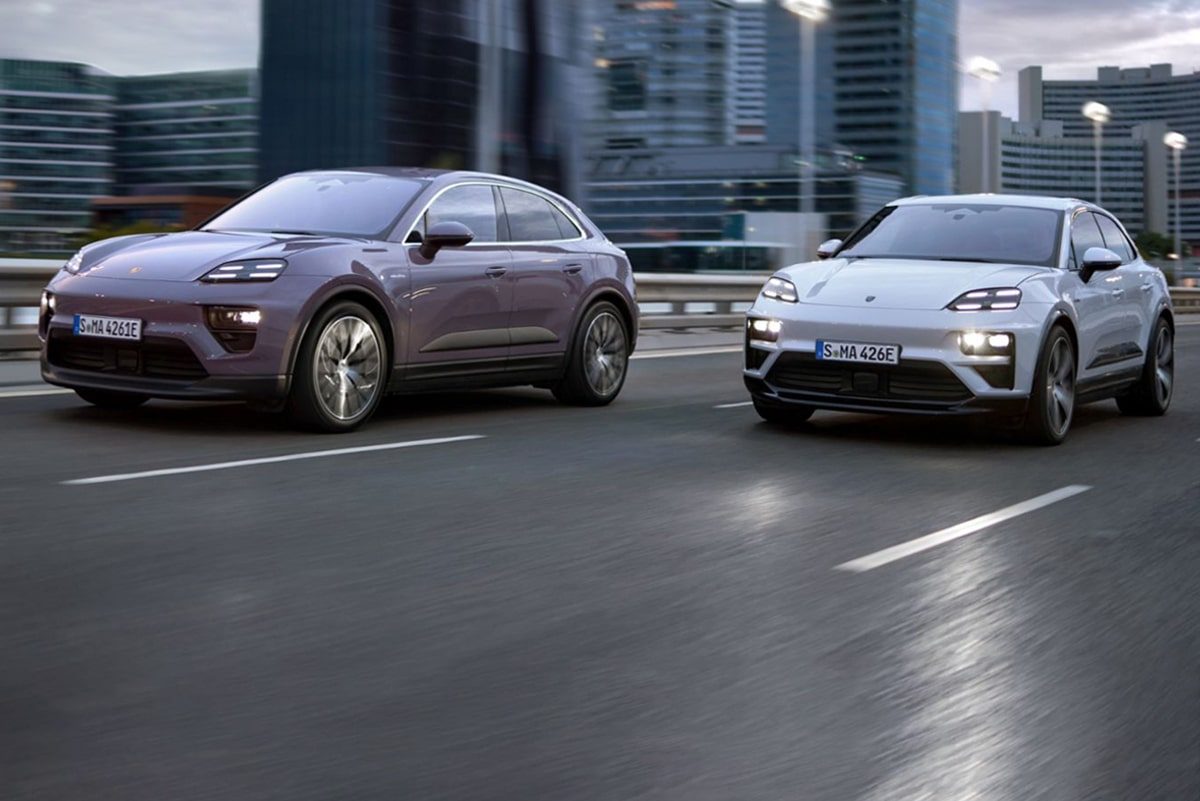
World premiere of the Porsche Macan: The first PPE electric car is here
First, it is not a Macan E, nor is it a Macan Electric. Porsche only refers to it as the “new Macan.” No name affix, just Porsche Macan. That should clarify that the electric model is not just an addition to the combustion-powered Macan (which will continue to be offered for now) but the replacement. “Our bestseller is going electric,” said Porsche boss Oliver Blume at the premiere in Singapore. However, to avoid confusion in sales, the new model is labelled “Electric” in the configurator.
As announced, the Macan will be available in two variants at market launch – but we were wrong about one thing. Based on our impressions of the Macan technology workshop last year, we guessed that the two variants would be the Macan 4S and Macan Turbo. The top model is actually called the Macan Turbo. However, Porsche has only opted for Macan 4 for the (provisional) base model.
With its electric all-wheel drive, this model has an output of 300 kW and offers a maximum torque of 650 Nm. As both Macan variants use the same battery with an energy content of 100 kWh, the slightly weaker Macan 4 has a greater range. It can go up to 613 kilometres on one charge, according to WLTP. With the equivalent of 408 hp, the Macan 4 can complete the standard sprint in 5.2 seconds and has a top speed of 220 kph.
Macan Turbo delivers 470 kW
The Macan Turbo uses the same motor on the front axle as the Macan 4 but an entirely different version on the rear axle – read more about this in our background article on the Macan. For the top model, that means a system output of up to 470 kW in overboost (or 639 hp). The torque – also in the briefly available overboost – is 1,130 Nm; Porsche does not specify the “regular” values without overboost in the press release. With Launch Control (and the aforementioned overboost), the Macan Turbo can accelerate from a standstill to 100 kph in 3.3 seconds. The top speed is 260 kph. Previously, Porsche had only spoken of “over 450 kW” of power.
Of course, anyone utilising the acceleration or top speed will not come close to the standard range. However, if the Macan Turbo is driven according to WLTP specifications, it has a range of 591 kilometres. Despite the extra power, the Macan Turbo is thus in a range that is likely negligible compared to the Macan 4 in everyday driving. The driving profile and personal driving style will greatly influence consumption and range – more than a difference of 22 WLTP kilometres. But aerodynamics also plays a major role. According to Porsche, the final body design should mean an increase in range of 85 kilometres. However, the basis of comparison for this statement remains unclear.
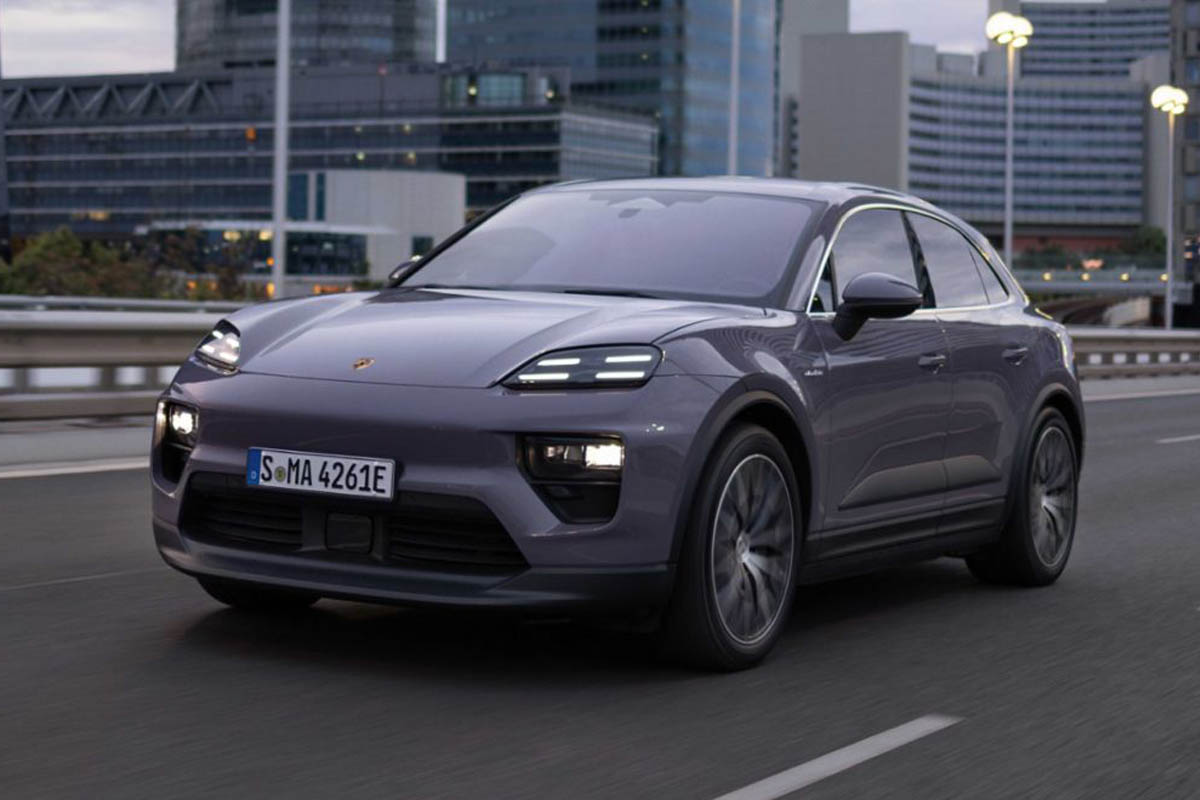

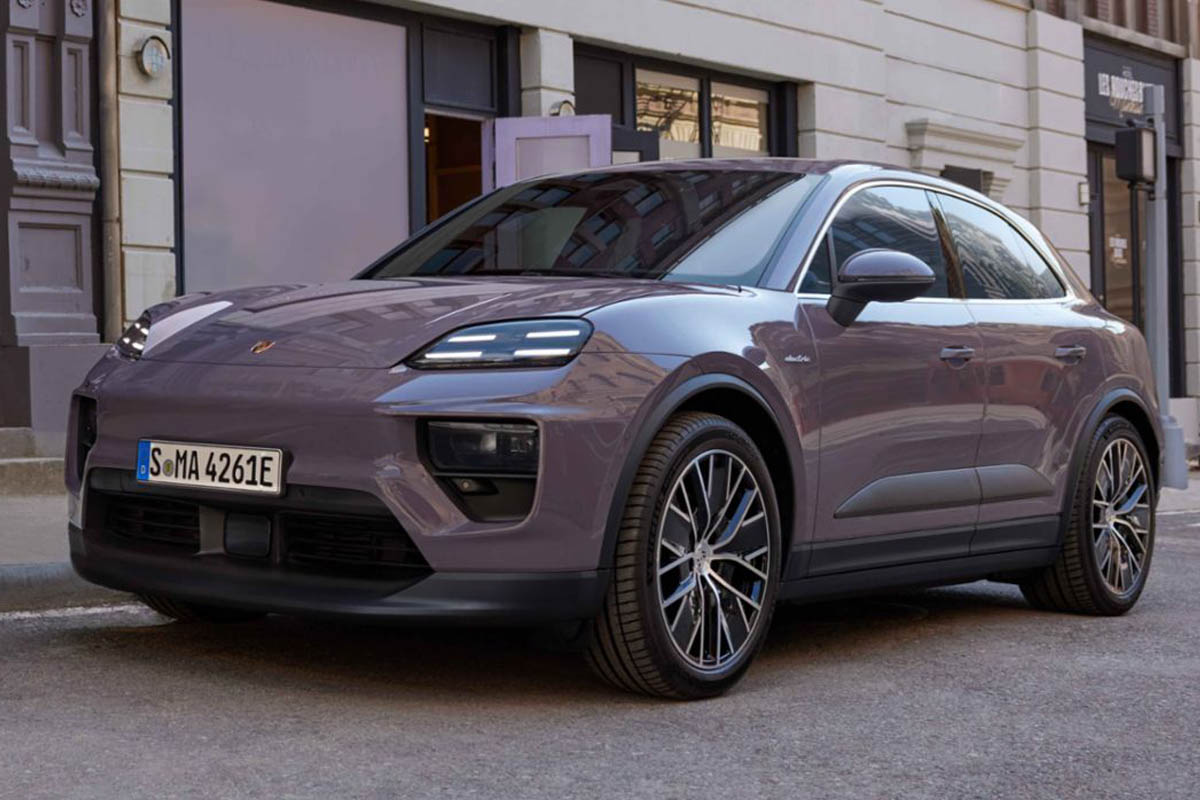
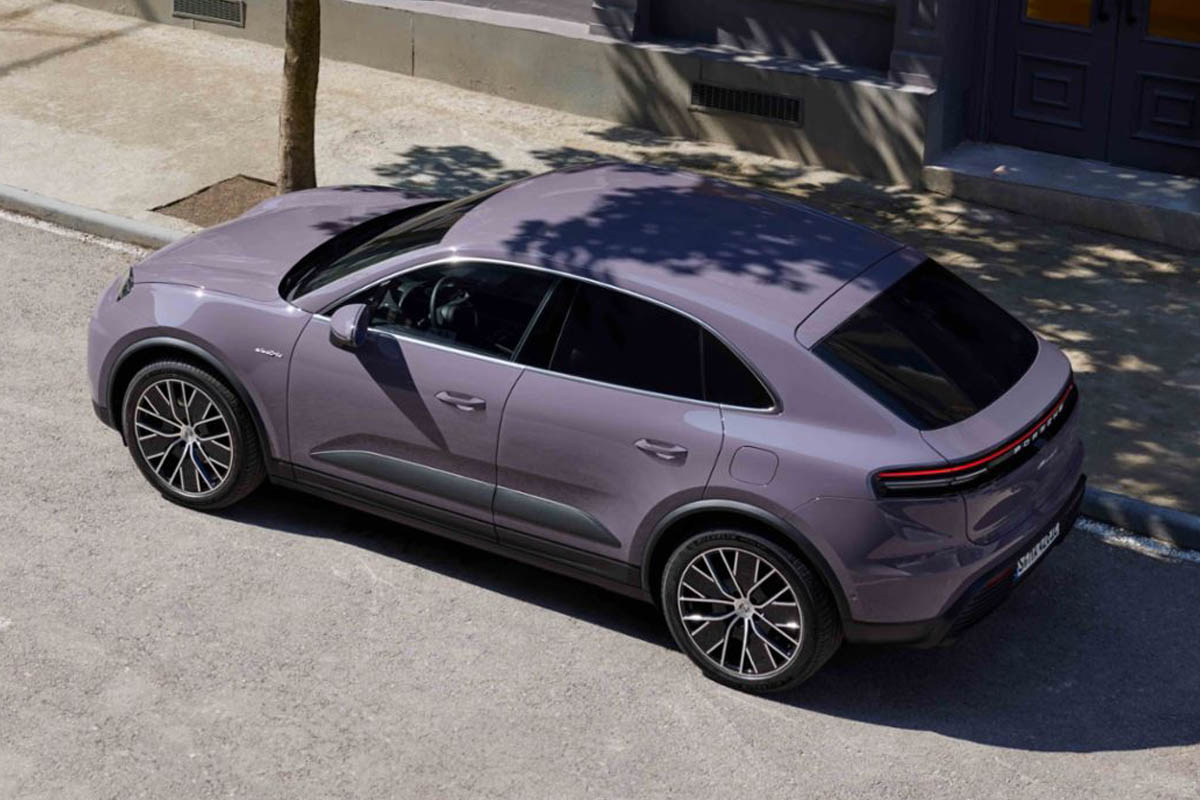
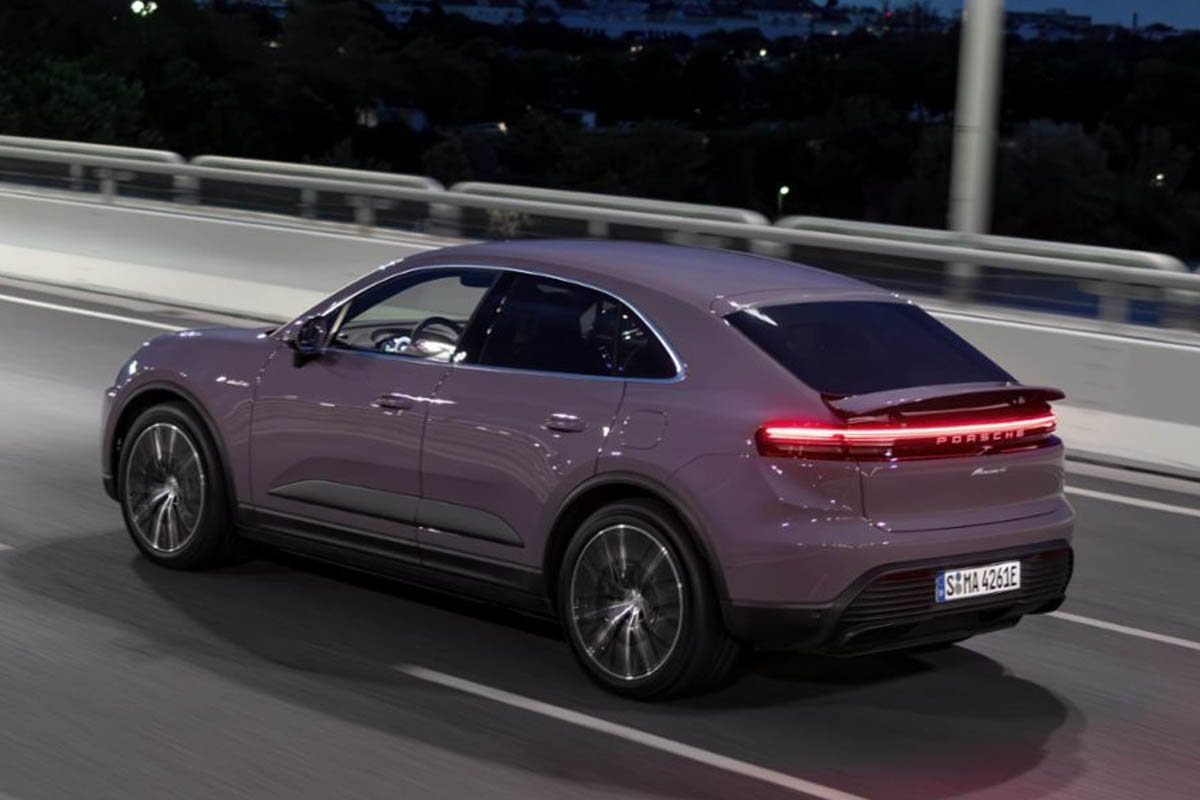
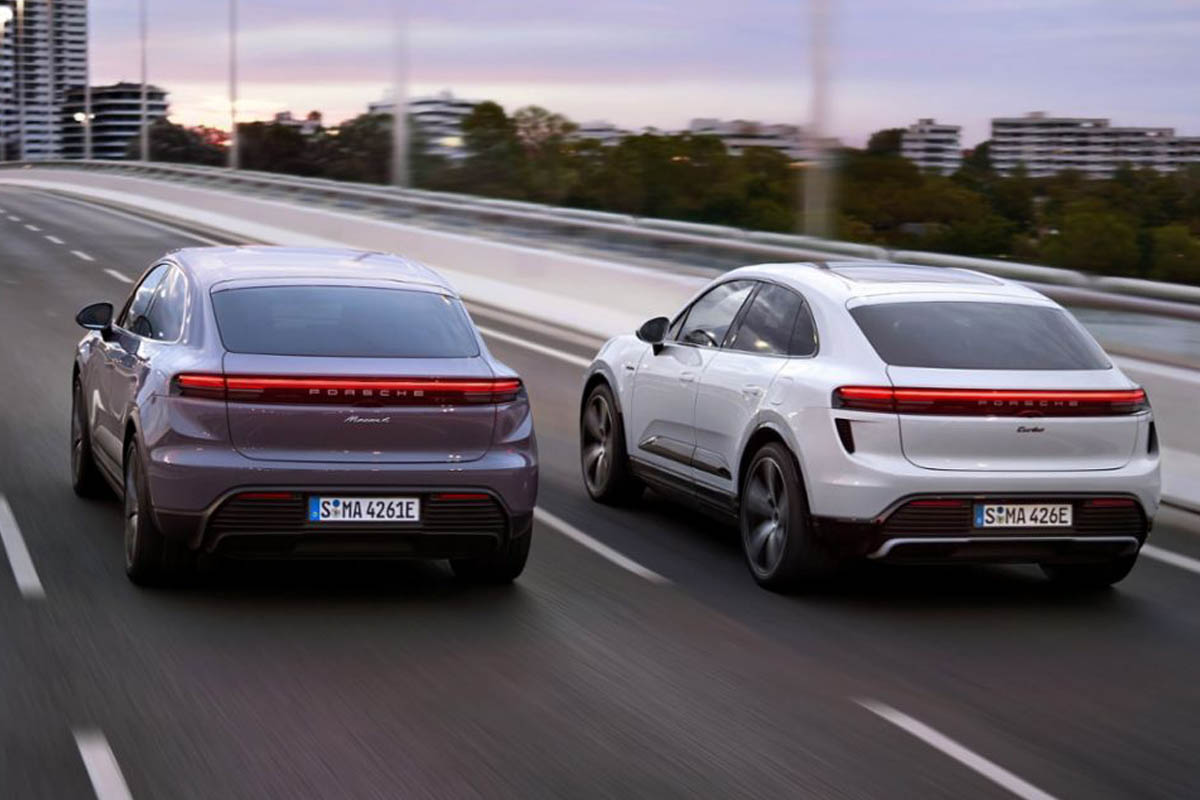
And even if Porsche launches further Macan drive variants – based on the Taycan portfolio, a 4S or GTS would be conceivable between a Macan 4 and Macan Turbo – these are also likely to have a standard range of around 600 kilometres standard range. Macan series manager Jörg Kerner stated in a video clip at the event that all models will have a range of more than 500 kilometres.
With that in mind, it seems possible that Porsche could offer a smaller battery and a more affordable base model. As mentioned above, a 100 kWh battery is used in both variants – you can find out more about the structure and the cell supplier in our background article. However, it is also possible that Kerner is referring to the WLTP range. The Macan Turbo, with the worst equipment from a fuel consumption point of view, still achieves 518 WLTP kilometres.
So far, Porsche has only spoken of a battery of “around” 100 kWh. With the world premiere, it is clear that the vehicle contains exactly 100 kWh, 95 per cent of which can be used according to Kerner. The net energy content is, therefore, 95 kWh.
This 800-volt battery is recharged with up to 270 kW peak. The charging process from ten to 80 per cent should take 21 minutes under ideal conditions. With a net energy content of 95 kWh, 66.5 kWh are recharged in this time, corresponding to an average charging power of 190 kW. That’s something to be proud of. Incidentally, the DC charging port on the Macan is located above the left rear wheel, while there is an additional AC charging port above the right rear wheel. AC charging is possible with 11 kW.
There is a slight change to a particular function of the Macan battery, known as “bank charging.” If the charging station only offers 400 volts, the battery can be virtually divided into two banks, which are then charged in parallel. That should enable “particularly efficient charging, without an additional HV booster, at up to 135 kW.” Previously, Porsche had spoken of up to 150 kW with this function.
3.5 million test kilometres
To test the new drive units, the battery, their charging behaviour and the chassis under all conceivable conditions, the prototypes and near-production models have covered over 3.5 million kilometres – from 30 degrees below zero in Scandinavia to 50 degrees in Death Valley. “An outstanding vehicle that performs on any surface,” says Blume about the new Macan.
The testing phase was not only so extensive because Porsche attaches great importance to extreme tests and the driving dynamics typical of the brand, or because the Macan is the first model on a new platform. The Macan will again be available with the typical Porsche surcharge list. Customers can thus choose between different technologies (depending on the model), for example for the suspension and brakes. All these components and combinations have to be tested and harmonised beforehand. A basic Macan with steel springs and steel brakes is almost a different car to a Macan with adaptive air suspension, ceramic brakes and the “performance rear end” of the Turbo model, which means an entirely different rear axle design.
At the event at the Gardens by the Bay in Singapore, with the iconic Marina Bay Sands hotel in the background, the focus was less on individual equipment details. Porsche focussed primarily on the design. There are few surprises when it comes to the design itself. The new Macan bears all the hallmarks of the brand’s current design language, from the four-section LED daytime running lights at the front to the Macan-typical sideline and the continuous light strip at the rear.
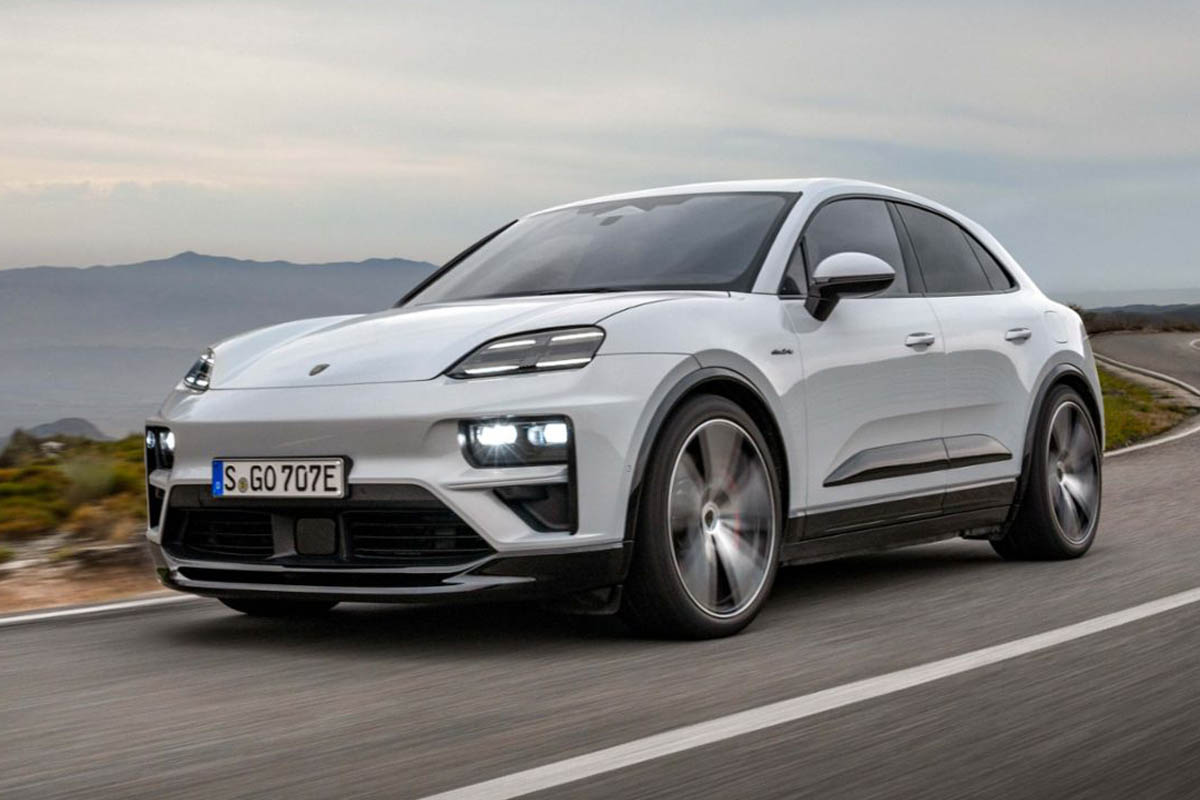
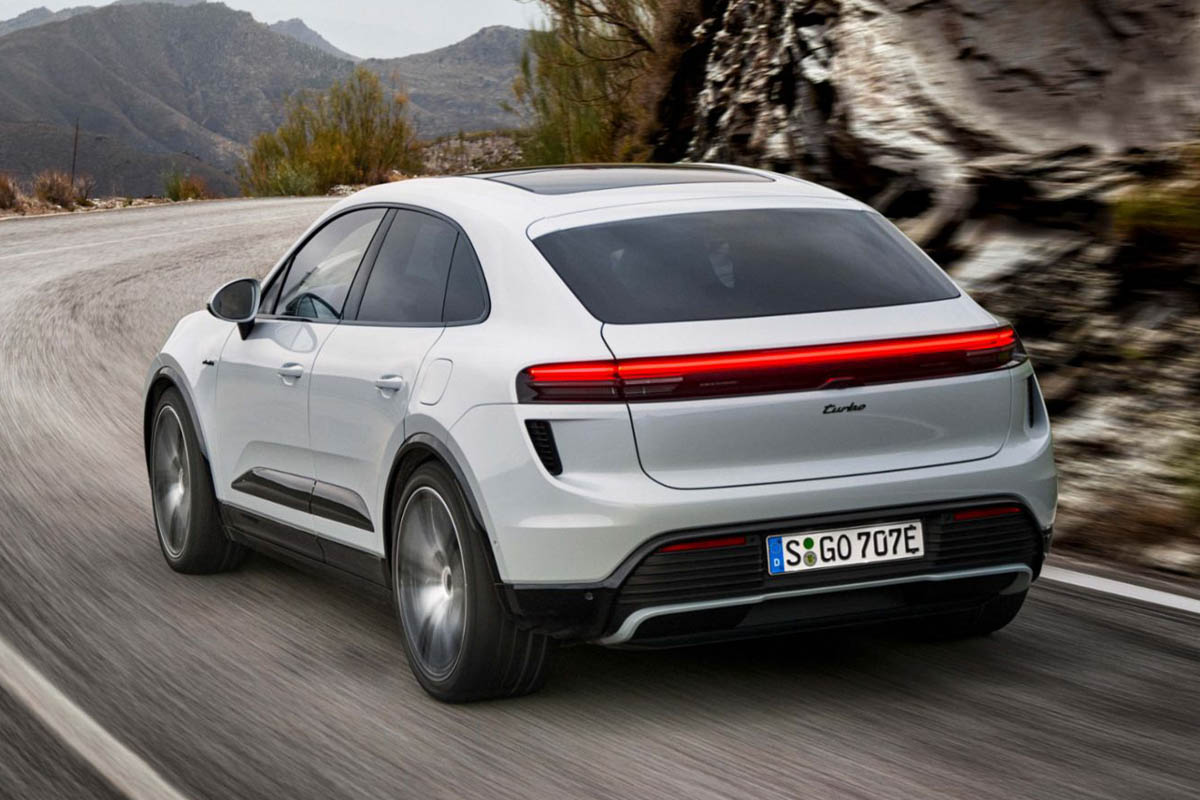
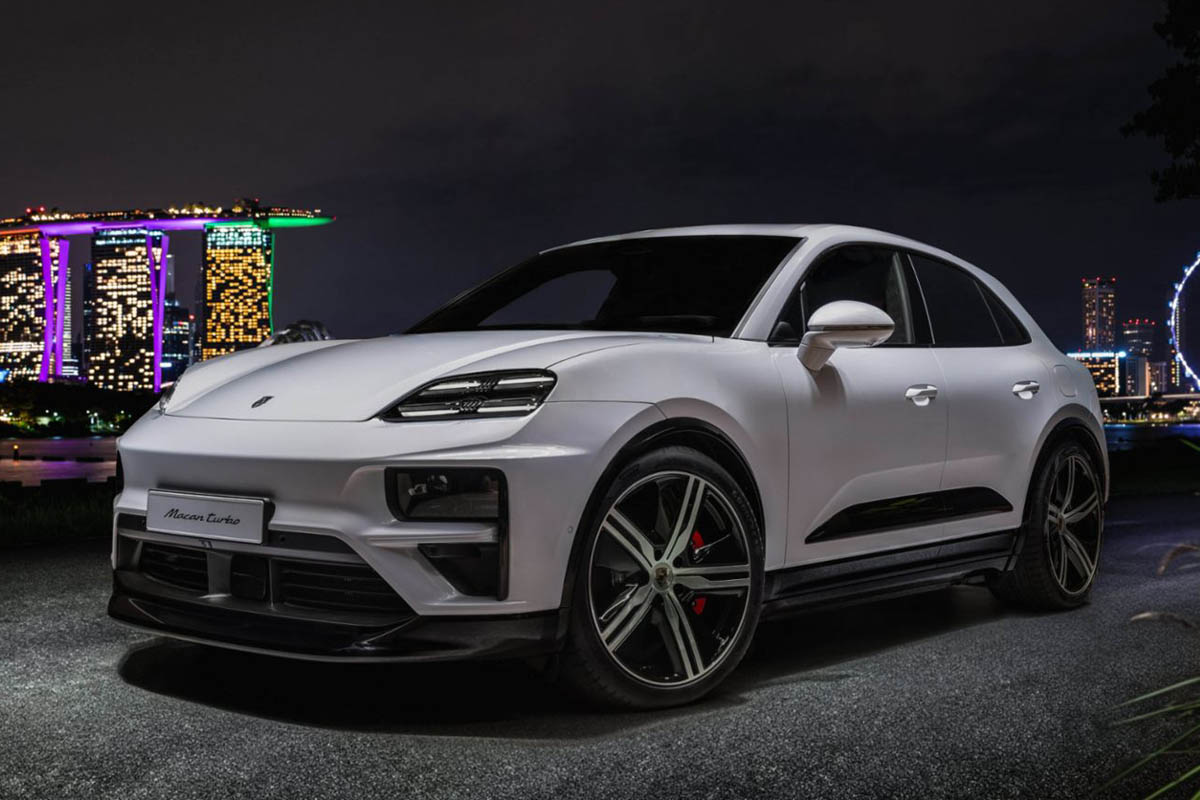
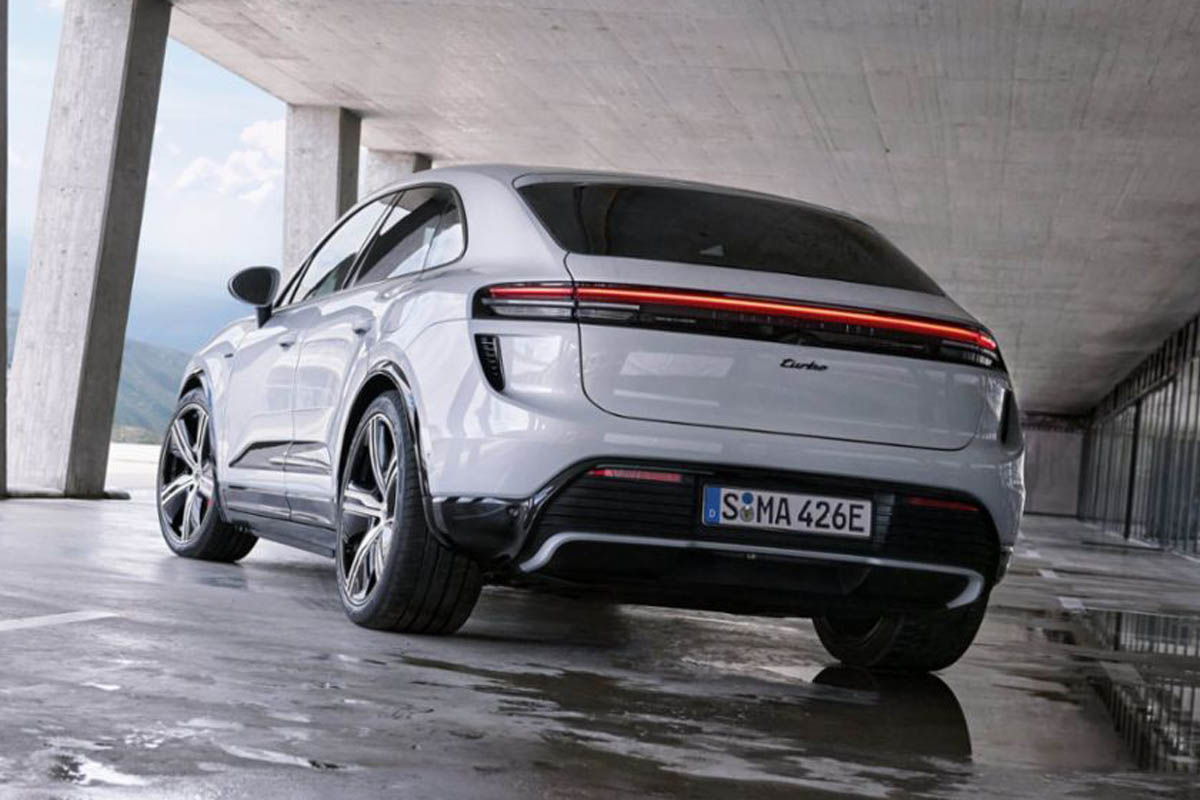
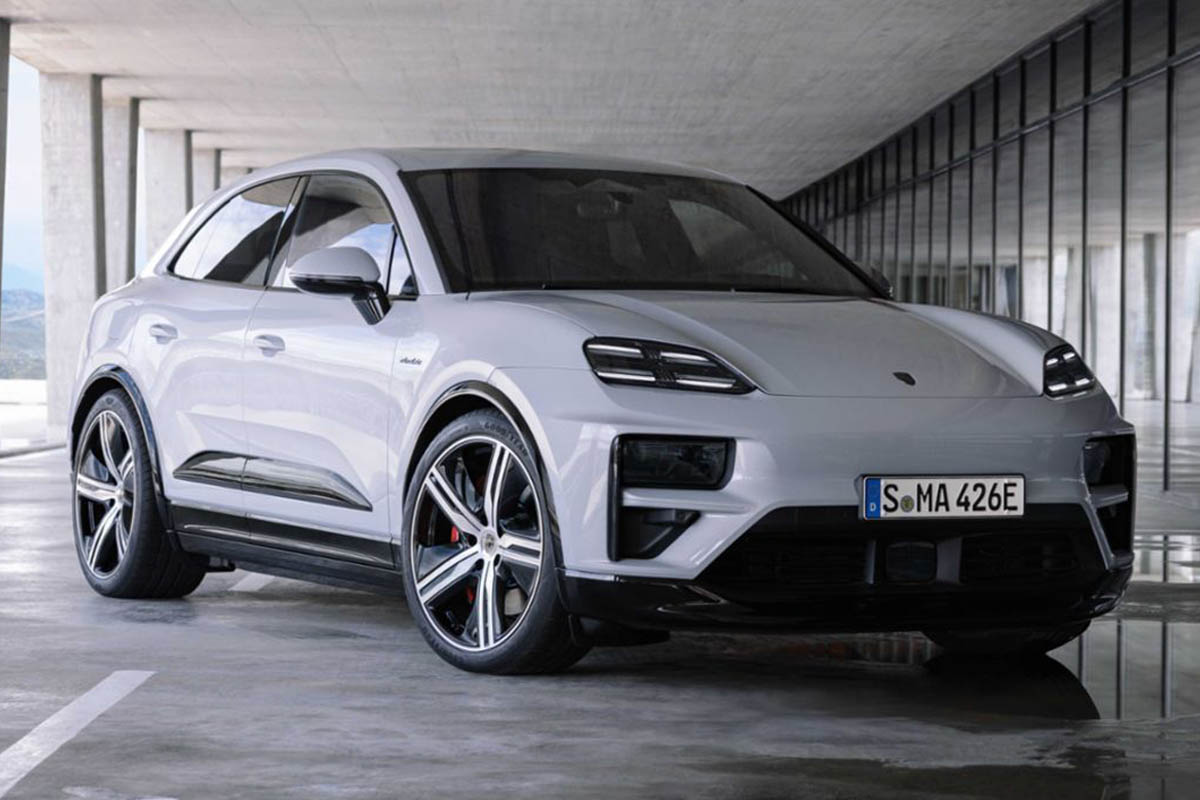
However, some of the elements have been reinterpreted. For example, the aforementioned daytime running lights have been placed as a design element in the typical headlight position. The actual headlights are located in a separate unit underneath. But even that is no longer a surprise, as this design feature was already recognisable in the numerous prototypes. However, the light strip at the rear is more striking than before as, together with a dark-coloured area around the Porsche lettering, it is one of the defining design elements of the rearview – and not just a narrow, red light across the entire vehicle width.
“The new Macan is clearly recognisable by its brand identity as part of the Porsche product family. The classic Porsche proportions have been further developed and optimally adapted to the challenges of an electric vehicle,” says Head of Design Michael Mauer. “This has further heightened the sporty, modern and dynamic appearance of the Macan. The design makes it clear: The Macan remains the sports car in its segment, even in electric form.”
The most important data in a nutshell: The Macan is 4.78 metres long, 1.94 metres wide without wing mirrors and 1.62 metres high. The wheelbase is 2.89 metres, 8.6 centimetres longer than the previous combustion model. Despite the sloping roofline, the boot behind the rear seat bench (depending on model and equipment) has a capacity of up to 540 litres. If the rear seat backrest is folded down completely, the rear load compartment volume increases to up to 1,348 litres. As with the Taycan and combustion-powered sports cars such as the 911, the electric Macan also has a second load compartment under the front bonnet. The frunk holds another 84 litres and is designed to accommodate either the load equipment or a small travel bag. The maximum towing capacity of the new Macan is an even two tonnes.
The interior is typical Porsche – anyone who has ever sat in a reasonably modern Porsche should quickly find their way around the Macan. Under the surface, however, much is new. For example, the Macan is available for the first time with an augmented reality head-up display. And much more importantly, Porsche now uses Android Automotive OS as the operating system for infotainment.
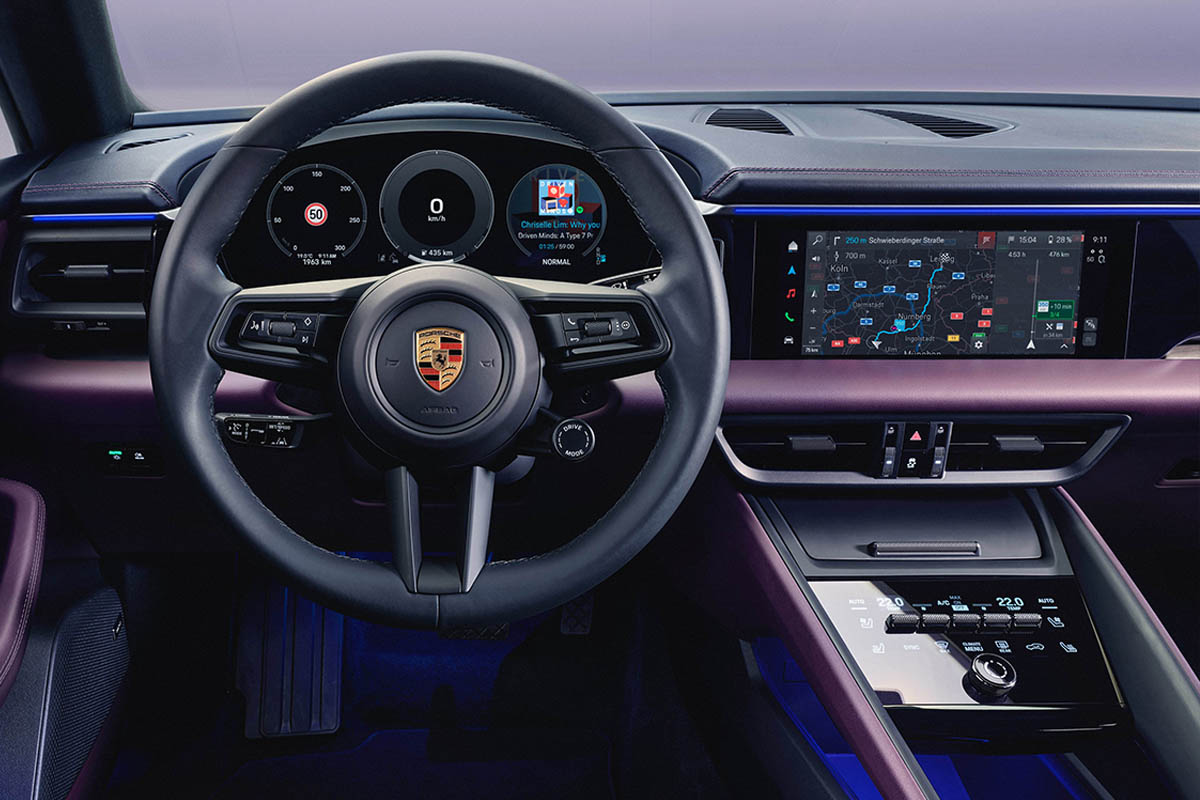
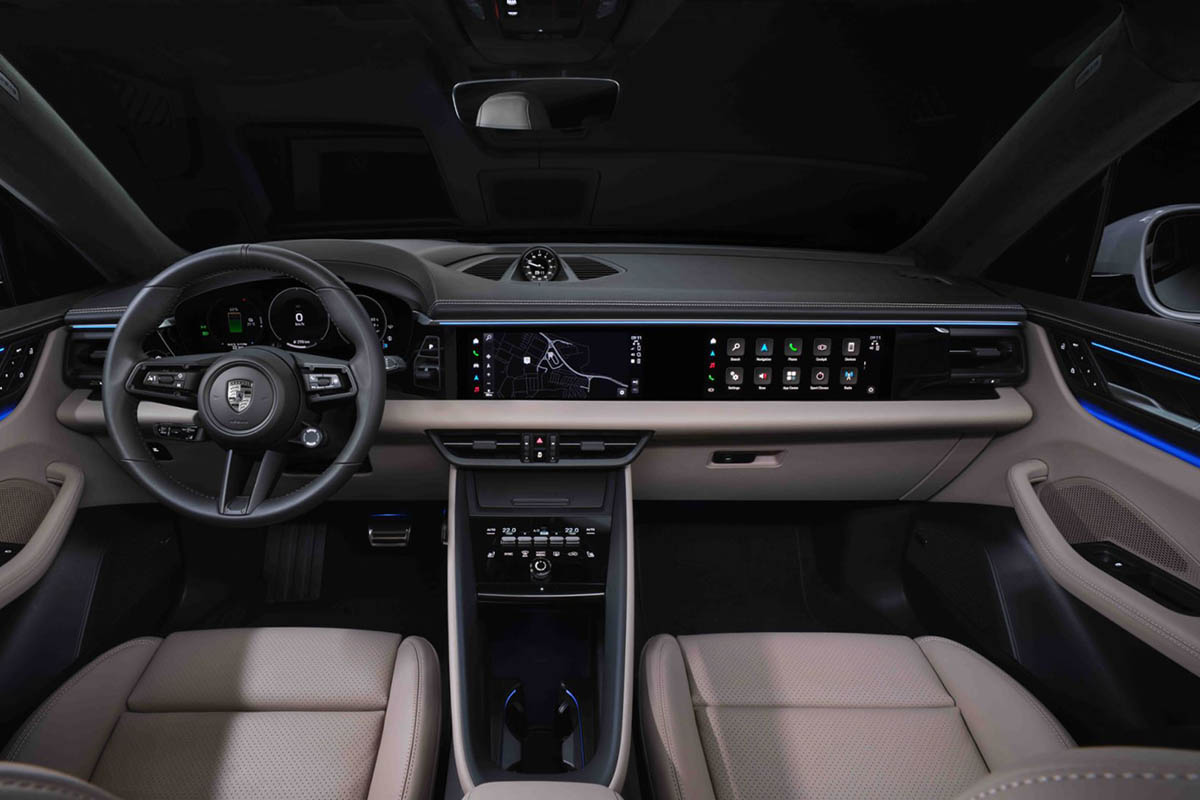
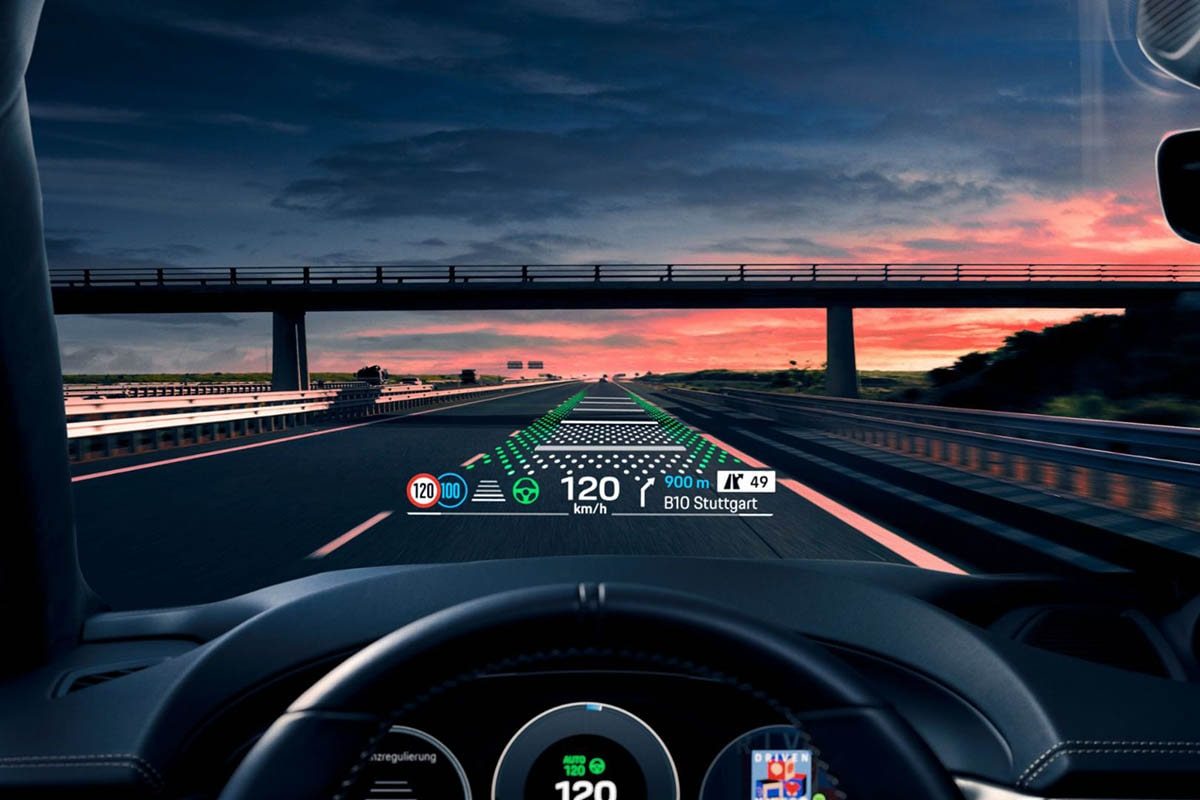
Although the user interface of the standard Porsche Communication Management (PCM) looks very similar, it has a completely different technical basis. According to Porsche, the Macan is set to reach “a new dimension” regarding computing power. That should be reflected not only in the response time of the voice assistant but also in route planning, including charging stops. The switch to the Android Automotive OS also enables an app centre for third-party apps. More on this – you guessed it – in our background article.
Prices start at 84,100 euros
Porsche has delivered more than 800,000 Macans worldwide since 2014. “This success story is set to continue with this all-electric successor, which is produced in a net carbon neutral way at the Porsche Plant Leipzig,” says Porsche.
What is somewhat unusual for a world premiere is that Porsche has immediately published the prices for the new model. In Germany, the Macan 4 is available from 84,100 euros, while the Macan Turbo costs at least 114,600 euros. In the UK, the base prices are £69,800 and £95,000, respectively, while in the US, the Macan is listed at $78,800 and $105,300. However, these prices are unlikely to be the end of the story. At the event, Porsche boss Blume emphasised the Macan’s high level of customisability. For an extra fee, of course.
Therefore, only one question remains unanswered. Will the Macan also be the first PPE model to reach customers? With the premiere, Porsche was ahead of its sister model, the Audi Q6 e-tron, which is expected to be unveiled in March. Porsche says the first new Macan will be delivered “during the second half of the year.” So now the ball is in Audi’s court.
Source: Livestream of the event, porsche.com (press release), porsche.com (UK configurator)




1 Comment